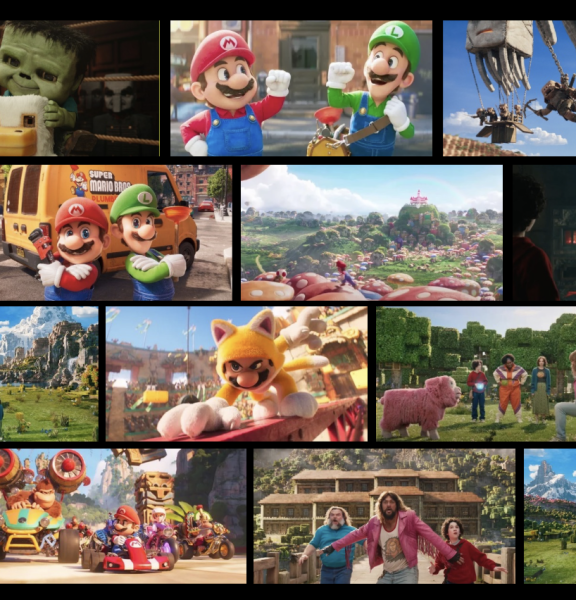## Should Gaming Be a Grind? El Estoque Challenges Us to Rethink How We Critique Entertainment
We all crave escape. That’s why we turn to games, movies, music – immersing ourselves in worlds that offer respite from the daily grind. But what happens when the very act of enjoying those experiences feels like homework? When analyzing, dissecting, and critiquing become mandatory, turning pleasure into pressure?

Beyond the “Meaning”: Embracing Simplicity and Feel-Good Experiences

A recurring trend in recent years has seen critics, particularly those covering film and television, gravitate towards more complex narratives, prioritizing depth, symbolism, and intricate character development. While these elements undoubtedly contribute to a film’s quality, their dominance in critical discourse often overshadows the value of pure entertainment. This tendency to dismiss lighter, more straightforward stories as lacking substance ignores the immense appeal these works hold for a significant portion of the audience.
Consider the critical reception of films like “The Super Mario Bros. Movie” (2023) and “A Minecraft Movie” (2025). Both films, aimed primarily at younger audiences, faced harsh criticism for perceived simplicity and lack of depth. Critics argued that they lacked complex themes, nuanced characters, and sophisticated storytelling. However, both films achieved blockbuster success at the box office, defying the negative critical reception. “The Super Mario Bros. Movie” grossed over $1.36 billion domestically, cementing its place as the highest-grossing video game-inspired film ever. “A Minecraft Movie” also defied expectations, raking in $157 million in its opening week, becoming April’s highest-grossing debut of that year.
This disconnect between critical reception and audience response highlights a crucial point: the value of entertainment should not be solely measured by its ability to convey complex messages or explore profound philosophical themes. Sometimes, a film’s primary purpose is simply to entertain, to provide an enjoyable and engaging experience. This doesn’t diminish its worth; it simply acknowledges a different kind of artistic expression.

The Target Audience Matters
Children’s Entertainment: Different Expectations, Different Criteria
When evaluating children’s entertainment, it’s essential to consider the developmental stage and expectations of the target audience. Children often seek stories that are visually appealing, action-packed, and emotionally engaging. They may not be looking for complex symbolism or intricate plot twists. A film that prioritizes these elements might resonate with adults but fail to capture the attention and imagination of younger viewers.

Nostalgia and Familiarity: The Power of Simple Appeal
Another factor to consider is nostalgia. Films and TV shows based on popular video games, toys, or childhood memories often tap into a sense of familiarity and comfort. These works don’t necessarily need to reinvent the wheel or offer groundbreaking narratives. Their strength lies in their ability to transport viewers back to a simpler time, evoking positive emotions and shared experiences.

Reassessing the Criteria: How to Critique for the Right Audience
This isn’t to say that children’s entertainment should be exempt from critical analysis. However, the criteria used to evaluate it should be tailored to the target audience. Instead of focusing solely on depth and complexity, critics should also consider factors such as:
- Visual appeal and animation quality
- Storytelling clarity and pacing
- Emotional resonance and character development
- Educational value and positive messages
By adopting a more nuanced approach to critique, we can better appreciate the unique qualities and value of different types of entertainment.
Finding a Middle Ground: A New Approach to Critique
The Value of Entertainment: Recognizing its Place in Art
Entertainment, in its purest form, provides a sense of escape, joy, and connection. It can transport us to different worlds, introduce us to fascinating characters, and offer valuable insights into the human experience. Dismissing entertainment as “shallow” or “meaningless” undermines its inherent worth and ignores its significant impact on our lives.
Expanding the Definition of Quality: Beyond the Traditional Markers
The traditional markers of quality in art, such as complexity, symbolism, and intellectual depth, are not the only indicators of a work’s value. Other factors, such as emotional impact, originality, technical skill, and cultural significance, also contribute to a work’s overall quality. Expanding our definition of quality to encompass these diverse elements allows us to appreciate a wider range of artistic expressions.
The Future of Critique: Embracing Diversity and Inclusivity
As our cultural landscape evolves and diversifies, so too should our approach to critique. We need to embrace a more inclusive and representative perspective, recognizing the value of different artistic traditions, storytelling styles, and cultural contexts. This means moving beyond a narrow focus on Western canon and incorporating a wider range of voices and perspectives into our critical discourse.
Conclusion
So, what’s the takeaway from El Estoque’s call to re-evaluate critique? It’s a challenge to move beyond the “homework” mentality of dissecting games and recognize the multifaceted nature of entertainment. While insightful analysis has its place, it shouldn’t overshadow the pure joy of playing. We need to find a balance, a way to engage with games critically without losing sight of their inherent value as sources of entertainment, escapism, and creative expression.
